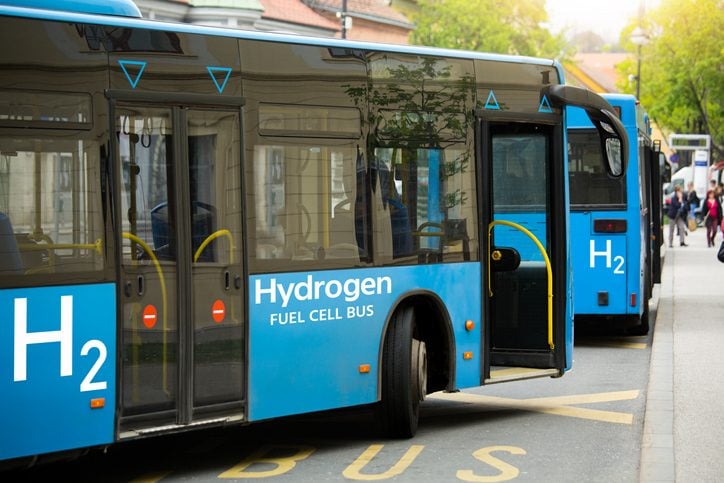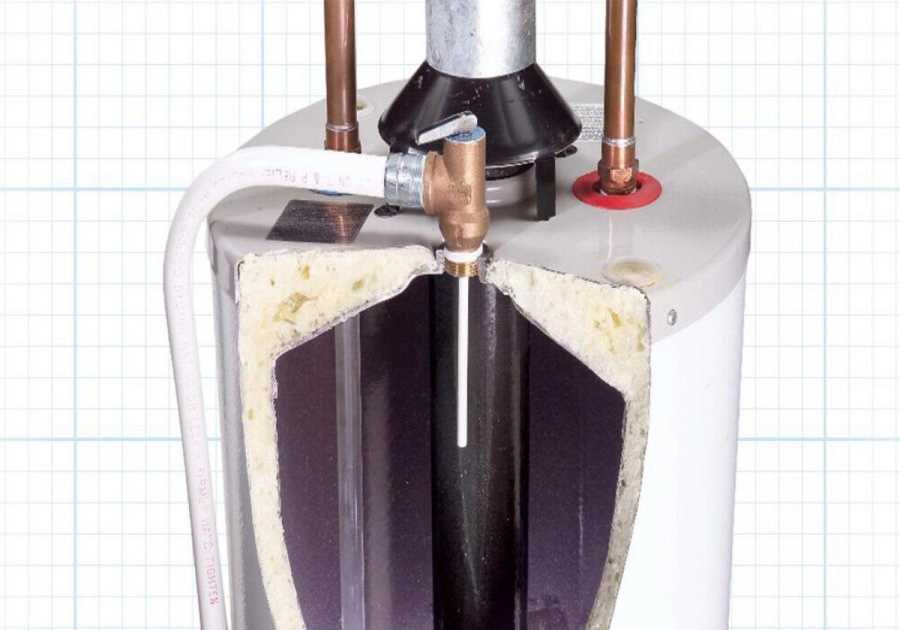Hydrogen is the most abundant element in the universe and the third most abundant on Earth, but almost all the Earth’s hydrogen is locked into other compounds. When extracted, it can be a valuable fuel source, because it’s highly reactive and releases usable energy when combined with other elements. That’s the idea behind hydrogen-powered fuel cells.
Scientists have developed several ways to extract hydrogen, making hydrogen-powered fuel cells an up-and-coming thing. According to Car and Driver, they powered more than 15,000 California cars in 2022, including the Toyota Mirai, the Hyundai Nexo and the Honda Clarity (no longer in production).
Energy.gov states on its website: “Fuel cells can be used in a wide range of applications, providing power for applications across multiple sectors, including transportation, industrial/commercial/residential buildings, and long-term energy storage for the grid in reversible systems.” That means a hydrogen fuel cell could well be powering your home’s electrical system in the future.
Not all hydrogen extraction methods are equal. Many rely on breaking up hydrocarbon-rich fuels like natural gas and coal, releasing carbon into the atmosphere. But it’s also possible to extract hydrogen from water using renewable energy. The “colors” of hydrogen refer to production methods, and they include a virtual rainbow.
What Is Hydrogen Power?

A hydrogen fuel cell supplies electricity and works something like a battery, but it isn’t a storage system and never needs recharging. It will continue producing electricity as long as there’s a steady flow of pure hydrogen.
Hydrogen, consisting of one negatively charged electron and one positively charged proton, is the simplest element in the universe.
When you supply hydrogen gas to a fuel cell, it flows to one side of the cell (the anode), where a catalyst splits it into protons and electrons. The protons migrate across a membrane to the other side (the cathode), while the electrons take another path, generating electricity and heat before ending up at the same place. The free protons and electrons finally combine with oxygen in the air to make dihydrogen monoxide, aka water.
Because water is the only byproduct of a fuel cell, it’s a clean energy system that adds no carbon to the atmosphere. This is promising news. But producing hydrogen also consumes energy and, depending on the method, creates pollutants.
What Color Is Hydrogen?
Hydrogen colors run from white to black, with a whole palette of hues in between. They don’t refer to the actual look of the gas (it’s colorless) but to the way it’s produced.
- White: Though most terrestrial hydrogen is locked into compounds, underground reservoirs of hydrogen gas do exist. Extraction involves fracking, a controversial procedure, and at present there are no plans to utilize this kind of hydrogen on a large scale.
- Black/Brown: The most environmentally damaging form of hydrogen, this comes from coal. Extraction involves gasification, subjecting coal to high heat to separate it into hydrogen and waste carbon that’s released into the atmosphere.
- Gray: This is the cheapest and most common type of hydrogen fuel available. Factories produce it by separating hydrogen from natural gas using steam. Like the black variety, gray hydrogen has a negative environmental impact, because its production releases carbon dioxide into the atmosphere.
- Blue: Producers extract blue hydrogen, aka low-carbon hydrogen, the same was as gray hydrogen. But in this case, they capture and store the emissions. This makes blue hydrogen a cleaner alternative to gray, but it’s not completely clean, because it still releases a small amount of emissions.
- Turquoise: To produce this, factories use a method called methane pyrolysis, which results in a solid carbon waste byproduct. It’s new, experimental, and hasn’t yet been used on a large scale.
- Pink/Red/Purple: Pink hydrogen, aka red or purple hydrogen, comes from electrolysis, which separates water into its component hydrogen and oxygen ions. Nuclear energy supplies the electrical power.
What Is Green Hydrogen?
Green hydrogen, aka yellow hydrogen to give it a sunnier name, is also a product of electrolysis, but the electricity comes from solar or wind power. It’s truly a clean fuel because, from production to final use, it’s completely emissions-free. It’s also a renewable resource as long as the planet has enough water to produce it.
Hydrogen vs. Electric Cars
Hydrogen fuel cell vehicles (HFCVs) aren’t overtaking electric vehicles (EVs) in popularity any time soon. Fifteen thousand California drivers own HFCVs, but there are more than 2.5 million EVs plying the roads nationwide.
HFCVs running on green hydrogen are an eco-friendly alternative to EVs. But they’ll probably stay in the background for the time being because of a few problems, including:
- Lack of a refueling infrastructure. California has only 60 refueling stations, with some occasionally offline because of supply shortages.
- Lack of accelerating power. Toyota equips the Mirai with an additional battery for high-demand situations.
- Unlike EVs, HFCVs can’t be recharged at home.
Did you miss our previous article...
https://rsssuperfeeds.com/life-hacks/what-you-need-to-know-before-using-a-halloween-fog-machine






